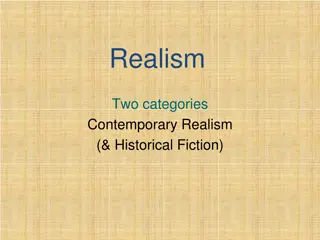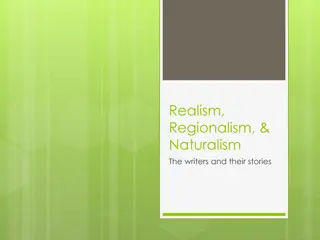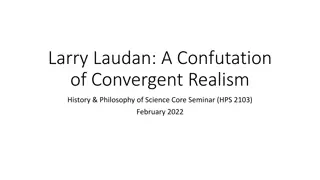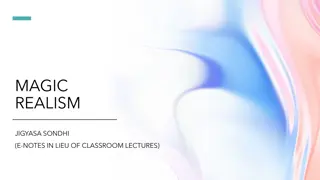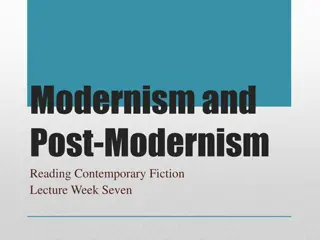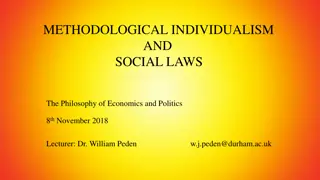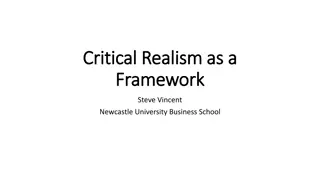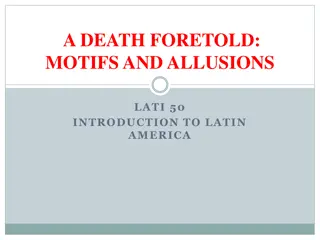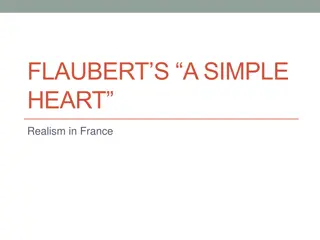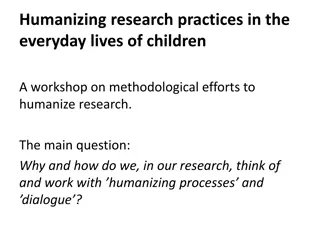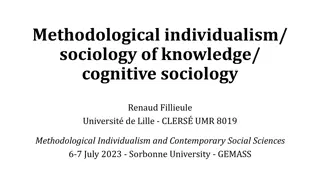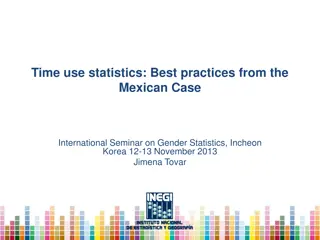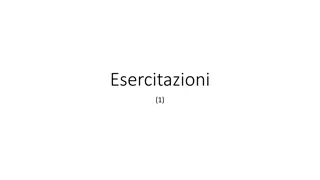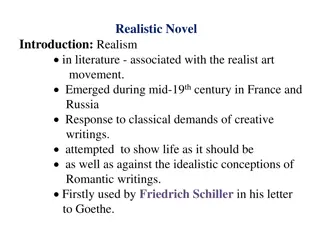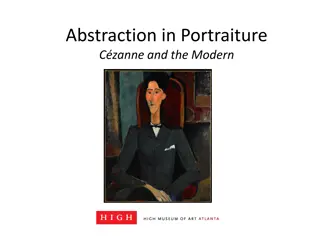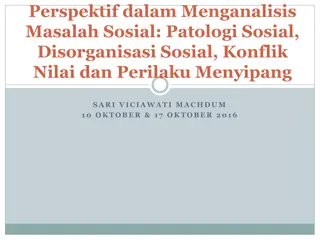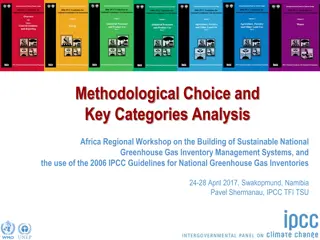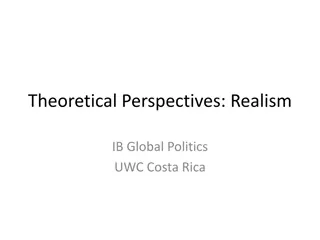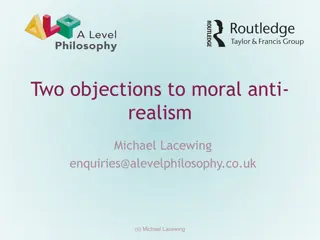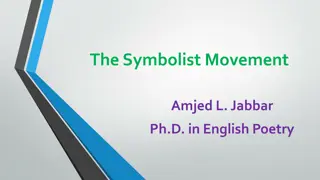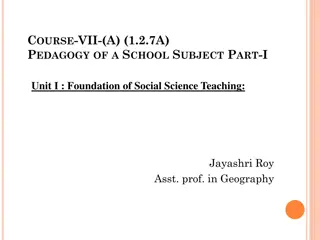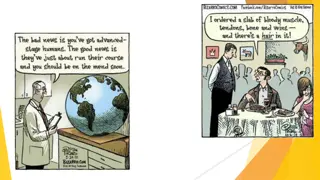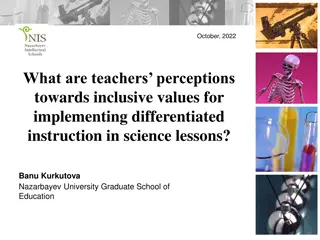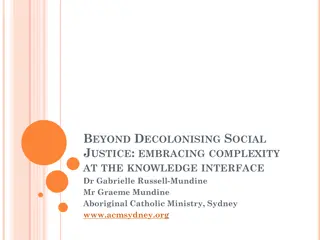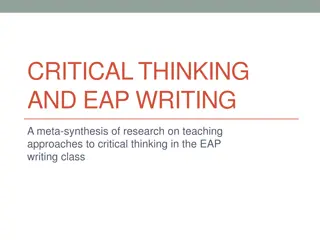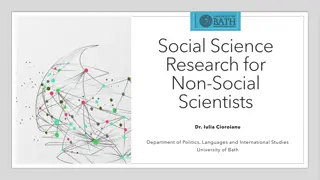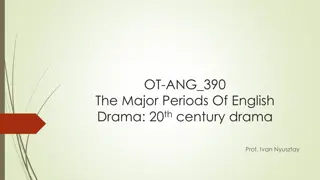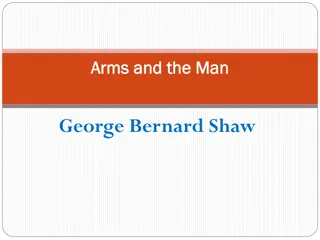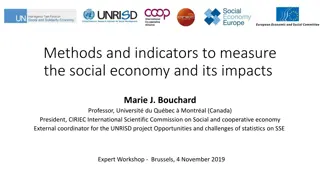Exploring Critical Realism for Social Science Research: Methodological Perspectives
Delve into the methodological choices and key concepts of Critical Realism for social science research, including the nature of reality, researcher-inquirer relationships, and assumptions about human agency. Learn about the domains of reality in Critical Realism and the distinction between qualitative and quantitative data in research. Engage with the ontology assumptions and epistemological framework of Critical Realism for a deeper understanding of social science methodologies.
- Critical Realism
- Social Science Research
- Methodology
- Nature of Reality
- Qualitative versus Quantitative
Download Presentation

Please find below an Image/Link to download the presentation.
The content on the website is provided AS IS for your information and personal use only. It may not be sold, licensed, or shared on other websites without obtaining consent from the author. Download presentation by click this link. If you encounter any issues during the download, it is possible that the publisher has removed the file from their server.
E N D
Presentation Transcript
Introducing Critical Realism for Social Science Research Workshop 3: Methodological Choices Deepak Saxena Ph.d. (Trinity College Dublin, Ireland) Assistant Professor (BITS Pilani, India) @EngageCR #CRworkshop
Lets know about you Stage (PhD Candidate, Post-doc, Faculty) Discipline/Research Area University
What is the form and nature of reality and, therefore what is there that can be known about it? (Guba and Lincoln, 1994) What is the nature of the relationship between the inquirer and what can be known? (Guba and Lincoln, 1994) The assumptions about relationship between researcher s value system and process of research. (Kuhn, 1971) Assumption about human agency and its relationship with other structural elements. (Burrell and Morgan, 1979) How does the inquirer go about finding out whatever she believes can be known? (Guba & Lincoln, 1994) Kuhn, T. S. (1962). The structure of scientific revolutions. Guba, E. G., & Lincoln, Y. S. (1994). Competing paradigms in qualitative research. Handbook of qualitative research, 2(163-194). Burrell, G., & Morgan, G. (1979). Sociological paradigms and organisational analysis (Vol. 248). London: Heinemann.
Locating CR Component Ontology Assumptions in CR (Critical) Realist Epistemology Subjective Axiology Theory-laden (Sayer, 1992) Human Nature Voluntary within the constraint of Reality Methodology Critical Multiplism (Cook, 1985) Sayer, A. (1992). Method in social science: A realist approach. Psychology Press. Cook, T. D. (1985). Postpositivist critical multiplism. Social science and social policy, 21-62.
Domains of Reality in CR The purpose of a critical realist study is to explain a given set of events by uncovering the hypothesised existence of mechanisms which, if they existed and were enacted, could have produced these events (Bhaskar 1975, 1989). Hence, a study using CR ideally would have the term mechanism in the research question.
Qualitative vs Quantitative Data Sayer (1992: 118) defines three types of change The purely quantitative (e.g., income level) That reducible to the movement of qualitatively unchanging entities (e.g., lifestyle) Finally, that which is irreducibly qualitative (e.g., subjective wellbeing) While the first two can be mathematicised (i.e., data collected quantitatively) in CR, last one cannot.
Possible methodology for CR-based case study 1. Triangulation and multimethod (and longitudinal) 2. Identification of key entities and events 3. Description of structure and events 4. Retroduction/Retrodiction: identification of candidate mechanisms 5. Empirical corroboration of identified mechanisms For a quick summary of various approaches, see: Wynn Jr, D. E., & Williams, C. K. (2020). Recent advances and opportunities for improving critical realism-based case study research in IS. Journal of the Association for Information Systems, 21(1), 50-89.
How do you know that you have arrived on a right set of mechanisms? You are able to explain the majority of events (and perhaps able to predict some) under consideration. You are able to determine certain contextual conditions under which the mechanism(s) will or will not operate. Some of your mechanisms are supported by existing theories. A mechanism-based explanation moves beyond describing what to explaining how. Saxena, D. (2021). Guidelines for Conducting a Critical Realist Case Study. International Journal of Adult Education and Technology (IJAET), 12(2), 18-30. Saxena, D. (2019). The search for mechanisms in business research: Reflections on retroductive analysis in a multilevel critical realist case study. Electronic Journal of Business Research Methods, 17(1), pp17-27.


